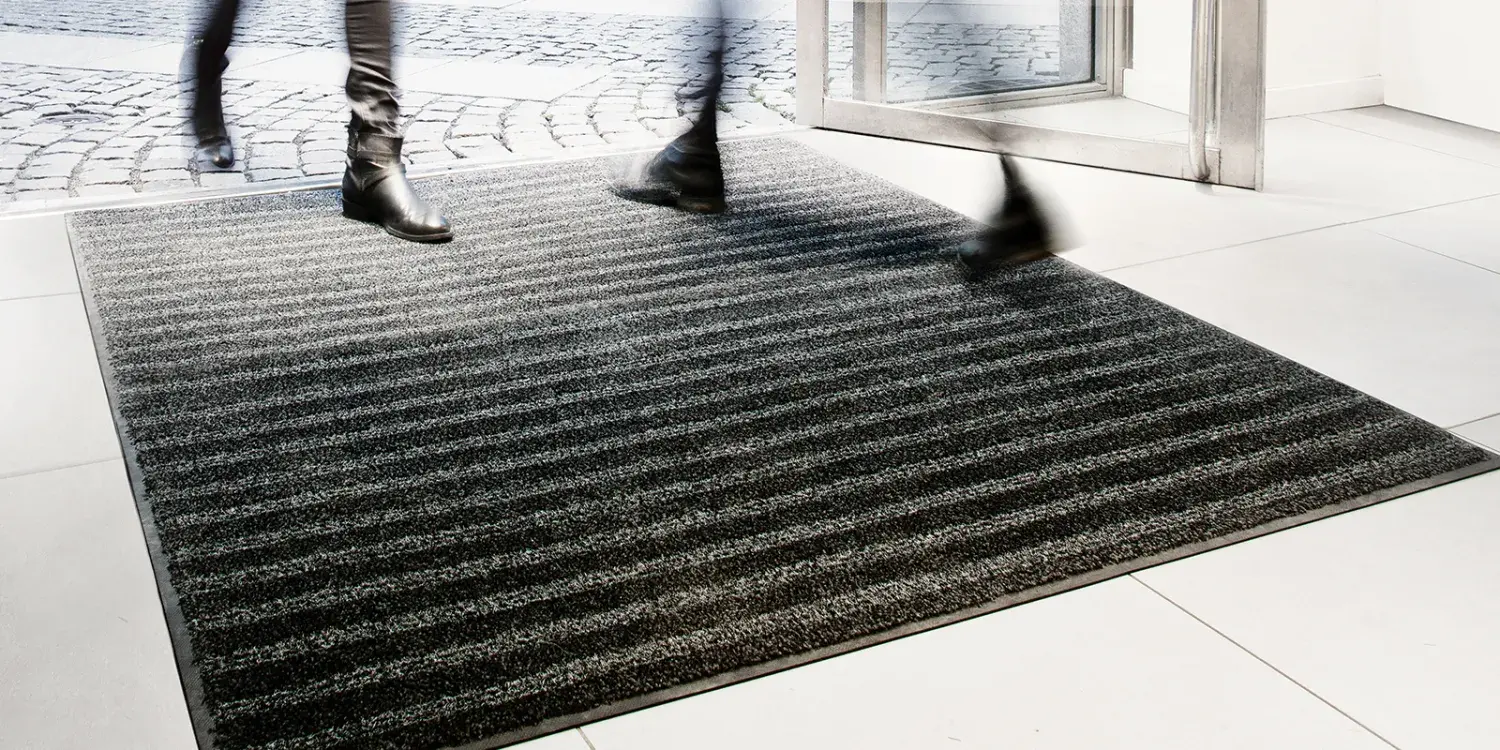CWS is committed to contributing to a healthier and safer tomorrow: Our solutions tackle health and safety from many angles and help keep employees and customers safe. A typical day at work can pose many pitfalls and challenges as far as health and safety are concerned. Want to test your knowledge about how to act correctly? Take our quiz!
Das Arbeitsschutz-Quiz
What is occupational health and safety?
Occupational health and safety (OHS) is all about keeping employees accident-free and healthy in the workplace. This mainly means ensuring that work environments are safe and healthy. The World Health Organization says: “occupational health deals with all aspects of health and safety in the workplace and has a strong focus on primary prevention of hazards.”
OHS means only reporting accidents. Is that statement correct?
Of course not! Many studies show that every serious accident was preceded by a number of near-accidents. That’s why it’s very important to report when things almost went wrong (or just right).
Smoking is prohibited in most company buildings. Why is that?
Because smoking can be a fire hazard and affect the health of non-smokers. Companies are obligated to protect employees, customers and visitors from inhaling toxic smoke. Everybody is entitled to a smoke-free environment.
What should you do in case of a fire?
Trigger the fire alarm in the building, alert the fire brigade by phone. Use escape routes and emergency exits together with your colleagues. Many companies have emergency assembly points where you can go.

Why can dirty workwear become risky for its wearer?
If oils and fats, among other things, aren’t completely washed off in the washing machine, workwear can become more easily flammable. It’s therefore advisable to have workwear cleaned by a professional laundry.
Which simple measure can reduce the risk of transmitting an infection to other people (your colleagues, patients or customers) by 50 per cent?
Washing your hands.
How can accidents from slipping on wet floors be avoided?
By laying out dust control mats on potentially slippery floors. These can soak up to 4.5 litres of moisture and dirt per square metre.

Why shouldn’t you wash welders’ protective clothing at high temperatures?
High temperatures can make the clothing’s fabric shrink. When welders’ trousers get too short, hot welding beads can drip into their shoes.
Why does cleanroom clothing have to be (partly) sterilised?
Sterilisation kills germs which could contaminate the product (e.g., a medication) and could therefore become a hazard to people.
What is the protective function of cleanroom goggles?
Cleanroom goggles protect products from contamination (e.g., eyelashes). They are also used to protect people’s eyes from hazardous liquids.
